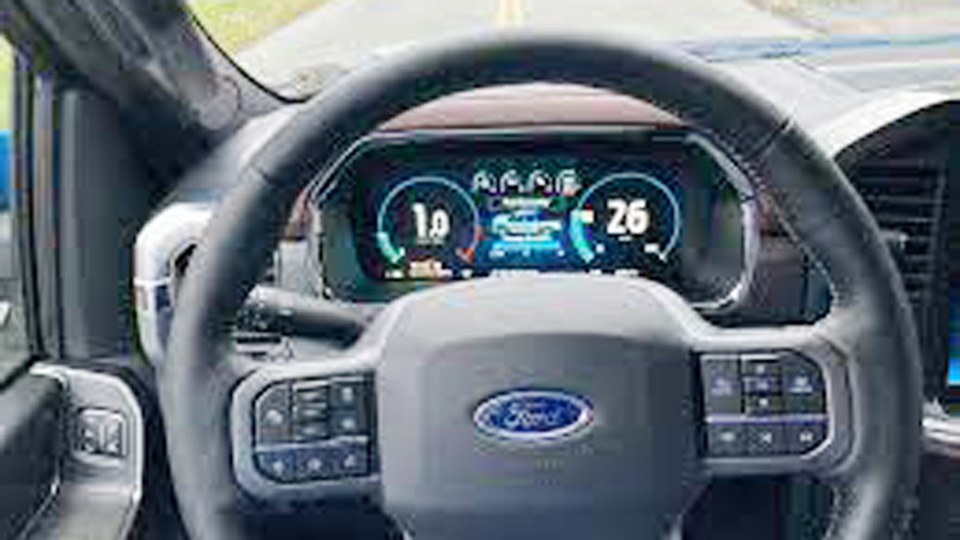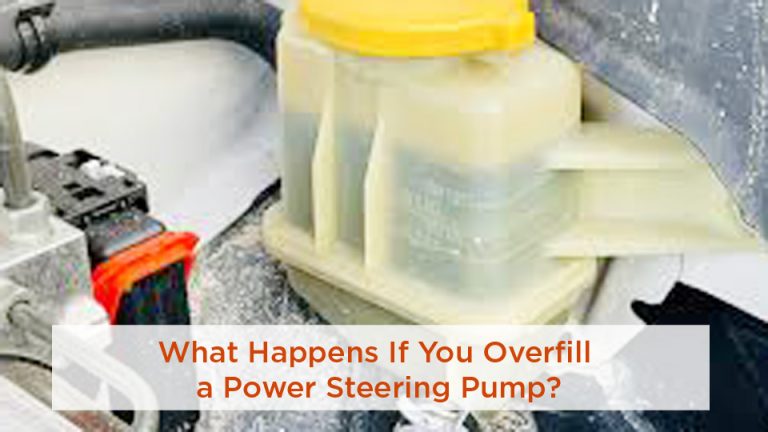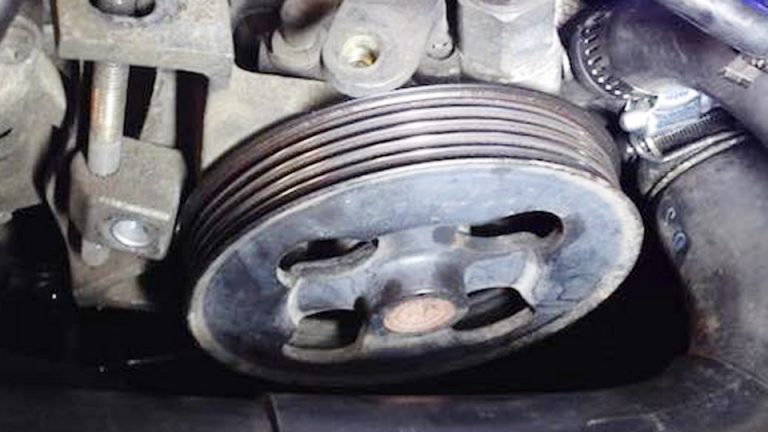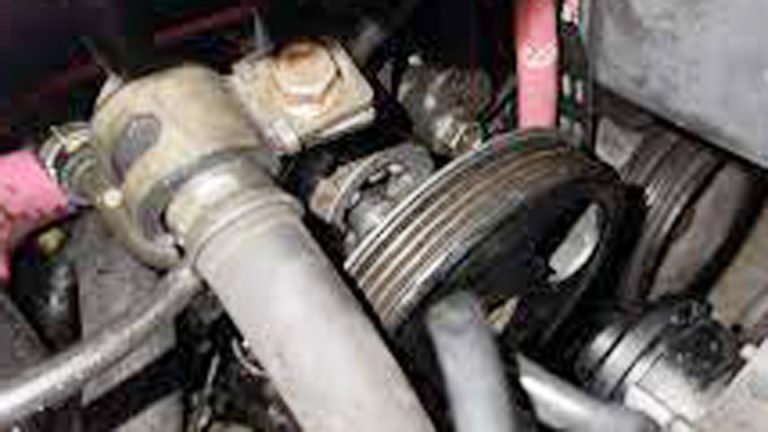I’ve been wrenching on cars for over a decade, and one issue that drives folks nuts is when their steering wheel isn’t centered after an alignment. You take your car to a shop, spend good money to get the wheels aligned, and then—bam—the steering wheel is cocked to one side while you’re driving straight. It’s frustrating, feels wrong, and can even make you question the shop’s competence.
This article dives deep into why this happens, how to fix it, and what you need to know about the parts involved. Whether you’re a DIY mechanic, a car enthusiast, or just a driver tired of a crooked wheel, I’ve got you covered with hands-on advice and practical tips.
A misaligned steering wheel isn’t just an annoyance—it can signal deeper issues with your vehicle’s steering or suspension system. It affects safety, tire wear, and even how your car handles. Let’s break down the causes, pinpoint the parts at play, and walk through how to get that wheel straight again, all while sharing some real-world insights from my time in the garage.

Image by f150gen14
Why Does a Steering Wheel Stay Off-Center After Alignment?
When you get an alignment, the goal is to set your wheels’ angles—camber, caster, and toe—to factory specs so your car tracks straight and handles predictably. But if your steering wheel is off-center afterward, something’s gone wrong. Here’s what’s usually happening:
Toe Misadjustment: The most common culprit. Toe is the angle of your tires relative to the vehicle’s centerline. If the technician doesn’t center the steering wheel during the alignment, the toe settings can pull the wheel off-center.
Steering Rack Issues: A worn or improperly adjusted steering rack (or tie rods) can cause the wheel to sit crooked.
Suspension Wear: Worn bushings, ball joints, or control arms can throw off the alignment, even if the shop adjusts the toe.
Improper Calibration: Some modern cars with electric power steering (EPS) need a steering angle sensor reset, which shops sometimes skip.
Road Crown Compensation: In the US, roads often slope to the right for drainage, and some alignments are set to compensate, which can slightly offset the wheel.
This matters because a misaligned steering wheel can lead to uneven tire wear, poor handling, and even safety risks if the car pulls unexpectedly. In my experience, I’ve seen customers come into the shop fuming because their “brand-new alignment” feels worse than before. Let’s dig into the parts involved and how to fix this.
Key Parts Involved in Steering Wheel Alignment
Tie Rods and Tie Rod Ends
What They Are and Do: Tie rods connect your steering rack (or gearbox) to the wheel hubs, translating your steering input to the wheels. Tie rod ends are the adjustable joints at the end of the rods, allowing fine-tuning of the toe angle.
Common Problems: Worn tie rod ends develop play, causing sloppy steering or an off-center wheel. I once worked on a 2008 Honda Civic where the tie rod ends were so shot that the steering wheel was 15 degrees off, even after alignment.
When to Replace: Replace tie rod ends if you hear clunking, feel steering looseness, or see uneven tire wear. If the inner tie rod (part of the rack) is worn, you’ll need to address the rack itself.
OEM vs. Aftermarket:
- OEM (e.g., Moog, ACDelco): More expensive ($50–$100 per side), but built to factory specs. For a Toyota Camry, OEM tie rod ends from Moog last 80,000–100,000 miles.
- Aftermarket (e.g., Dorman, Mevotech): Cheaper ($20–$50), but quality varies. I’ve seen budget brands wear out in under 20,000 miles, especially on heavier vehicles like Ford F-150s.
- Comparison Table:
| Brand | Type | Price (Per Side) | Durability | Compatibility |
|---|---|---|---|---|
| Moog | OEM | $60–$100 | 80,000+ miles | Most US models (e.g., Chevy, Ford, Toyota) |
| Dorman | Aftermarket | $25–$50 | 20,000–50,000 miles | Wide range, check fitment |
| Mevotech | Aftermarket | $30–$60 | 50,000–80,000 miles | Good for GM, Chrysler |
Installation Tips:
- Use a tie rod separator or pickle fork to remove old ends without damaging boots.
- Count the threads when removing the old tie rod end to get the new one close to the original length.
- Torque to spec (usually 35–50 ft-lbs, check your vehicle’s manual).
- Common mistake: Not greasing the new tie rod end (if it’s greasable). I learned this the hard way on a Jeep Wrangler—dry joints squeak like crazy.
Check for play by jacking up the front end and wiggling the wheel side-to-side. If it moves without the steering wheel turning, your tie rod ends are toast.
Steering Rack
What It Is and Does: The steering rack (or rack-and-pinion) converts your steering wheel’s rotation into lateral movement for the wheels. It’s the heart of your steering system.
Common Problems: Worn bushings or internal gears can cause play, leading to an off-center wheel. A customer’s 2012 Subaru Outback had a rack so worn it caused a 10-degree wheel offset, even after alignment.
When to Replace: If you feel excessive play or hear knocking when turning, the rack may need replacing. This is pricier ($300–$1,000 for parts, plus labor).
OEM vs. Aftermarket:
- OEM: Costly ($500–$1,000), but reliable. Brands like Maval or Cardone (remanufactured) are solid for Hondas and Fords.
- Aftermarket: Risky. I’ve seen cheap racks leak fluid within months. Stick with remanufactured OEM if budget’s tight.
Installation Tips:
- Flush the power steering fluid to avoid contamination.
- Use a scan tool to reset the steering angle sensor on EPS-equipped cars (e.g., newer Toyotas or Chevys).
- Common mistake: Not aligning the rack properly during install, which throws off centering.
I once spent hours on a Dodge Ram trying to center the wheel, only to realize the remanufactured rack was miscalibrated from the factory. Always double-check new parts!
Steering Angle Sensor (Modern Vehicles)
What It Is and Does: Found in cars with electronic stability control (ESC) or EPS, this sensor tells the car’s computer the steering wheel’s position. It’s critical for keeping the wheel centered.
Common Problems: If the sensor isn’t reset after alignment, the wheel can stay off-center. This happened on a 2015 Chevy Malibu I worked on—the shop skipped the reset, and the wheel was 20 degrees off.
When to Replace: Rarely needs replacing unless damaged (e.g., after a collision). A reset usually fixes it.
OEM vs. Aftermarket: Stick with OEM for sensors ($100–$300). Aftermarket sensors can be finicky with ESC systems.
Installation Tips:
- Use a professional-grade scan tool (e.g., Launch or Autel) to recalibrate.
- Common mistake: Not driving the car in a straight line post-reset to “teach” the sensor.
Step-by-Step Guide to Fix a Steering Wheel Not Centered
Here’s how I tackle this issue in the shop, whether I’m working on a Ford Mustang or a Toyota Corolla. Follow these steps carefully:
- Verify the Issue:
- Drive the car in a straight line on a flat road. Note how far the steering wheel is off (e.g., 10 degrees left).
- Check for pulling or uneven tire wear, which could indicate other issues.
- Inspect Steering and Suspension:
- Jack up the front end and check for play in tie rods, ball joints, and bushings.
- Look for leaks or damage in the steering rack.
- Pro tip: A flashlight and mirror help spot worn bushings under the car.
- Recheck Alignment:
- Take the car to a trusted shop with a modern alignment rack (Hunter or John Bean are gold standards).
- Ask the tech to lock the steering wheel dead-center before adjusting toe.
- Request a printout of the alignment specs (camber, caster, toe) to confirm they’re within factory range.
- Reset Steering Angle Sensor (if applicable):
- For newer cars (post-2010), use a scan tool to reset the sensor.
- Drive straight for 100 feet post-reset to calibrate.
- Test Drive and Fine-Tune:
- Drive on a flat road (no crown) to confirm the wheel is centered.
- If it’s still off, adjust the tie rod ends slightly (1/4 turn at a time) and retest.
Tools Needed:
- Jack and jack stands ($50–$150)
- Tie rod separator ($15–$30)
- Torque wrench ($30–$100)
- Scan tool for EPS cars ($100–$500, or borrow from a shop)
- Alignment rack (shop-only, $50–$150 per alignment)
Safety Tips:
- Always use jack stands—never rely on a jack alone.
- Double-check torque specs to avoid loose parts.
- Wear gloves and safety glasses when working under the car.
Common Mistake: Rushing the alignment without checking for worn parts. I’ve seen DIYers waste $100 on alignments because a $30 tie rod end was the real problem.
OEM vs Aftermarket Parts Comparison
Here’s a deeper look at choosing parts, based on my experience fixing everything from Chevy Silverados to Honda Accords:
| Part | OEM Pros | OEM Cons | Aftermarket Pros | Aftermarket Cons |
|---|---|---|---|---|
| Tie Rod Ends | Long-lasting, precise fit | Expensive, limited availability | Affordable, widely available | Variable quality, shorter lifespan |
| Steering Rack | Reliable, factory-calibrated | High cost, longer install time | Cheaper, faster delivery | Prone to leaks, less precise |
| Steering Angle Sensor | Seamless ESC integration | Costly, dealer-only for some brands | Budget-friendly | Risk of compatibility issues |
US Market Notes:
Brands: Moog and ACDelco are go-to OEM options at stores like AutoZone or O’Reilly. Dorman’s hit-or-miss but widely available.
Availability: Most parts are in stock at Advance Auto Parts or online via RockAuto. Check fitment for your model (e.g., a 2018 Ford F-150 vs. a 2018 Toyota RAV4).
Fake Parts Warning: Avoid eBay or sketchy online sellers. I once got a “Moog” tie rod end that was clearly counterfeit—poor machining and no grease fitting. Stick to reputable retailers and check for brand logos or holograms.
Maintenance Tips to Prevent Steering Issues
- Regular Inspections: Check tie rods and bushings every 12,000 miles or during oil changes.
- Alignment Schedule: Get an alignment every 2 years or after hitting a bad pothole.
- Fluid Checks: For power steering racks, flush fluid every 50,000 miles to prevent wear.
- Tire Rotation: Rotate tires every 6,000 miles to catch uneven wear early.
A customer with a 2016 Jeep Cherokee ignored a clunking noise for months, thinking it was “normal.” Turned out to be a worn tie rod end that threw off the alignment and chewed up a $200 tire. Regular checks could’ve saved them hundreds.
Conclusion
A steering wheel that’s not centered after alignment is more than a cosmetic issue—it’s a sign something’s off with your steering or suspension. By understanding the role of tie rods, steering racks, and sensors, you can diagnose the problem and fix it right. Whether you’re a DIYer in your garage or taking your car to a shop, insist on checking for worn parts and proper calibration. Opt for OEM parts like Moog for longevity, but if budget’s tight, reputable aftermarket brands like Mevotech can work—just avoid the cheap stuff.
FAQ
Why does my steering wheel still pull after alignment?
Pulling can stem from uneven tire pressure, worn suspension parts (like bushings or ball joints), or an alignment that didn’t account for road crown. Check tire pressure first (use the door placard specs), then inspect suspension components for play.
How much does it cost to fix a steering wheel not centered?
Costs vary: $50–$150 for a proper alignment, $100–$200 for tie rod ends (parts + labor), or $500–$1,500 for a steering rack replacement. DIYers can save on labor but need tools and know-how.
Can I drive with an off-center steering wheel?
You can, but it’s not ideal. It may cause uneven tire wear, poor handling, or mask bigger issues like a failing rack. Fix it sooner than later to avoid costly repairs.
How do I know if my tie rod ends are bad?
Listen for clunking when turning, feel for loose steering, or check for uneven tire wear. Jack up the car and wiggle the wheel side-to-side—if it moves without the steering wheel turning, replace the tie rod ends.
Do I need a steering angle sensor reset after alignment?
For cars with ESC or EPS (most post-2010 models), yes. A shop with a scan tool can reset it in minutes. Skipping this step is a common reason for a crooked wheel.



